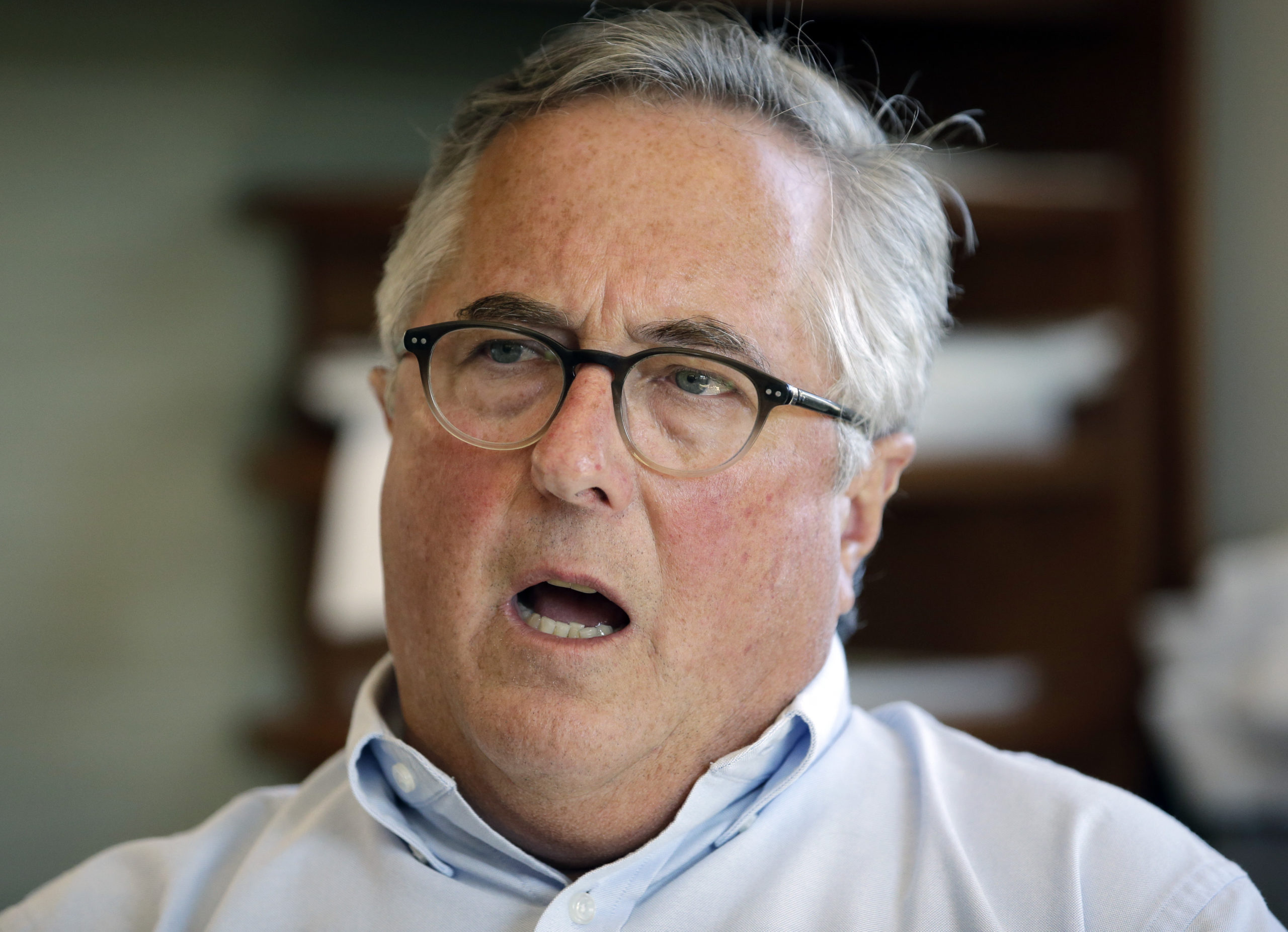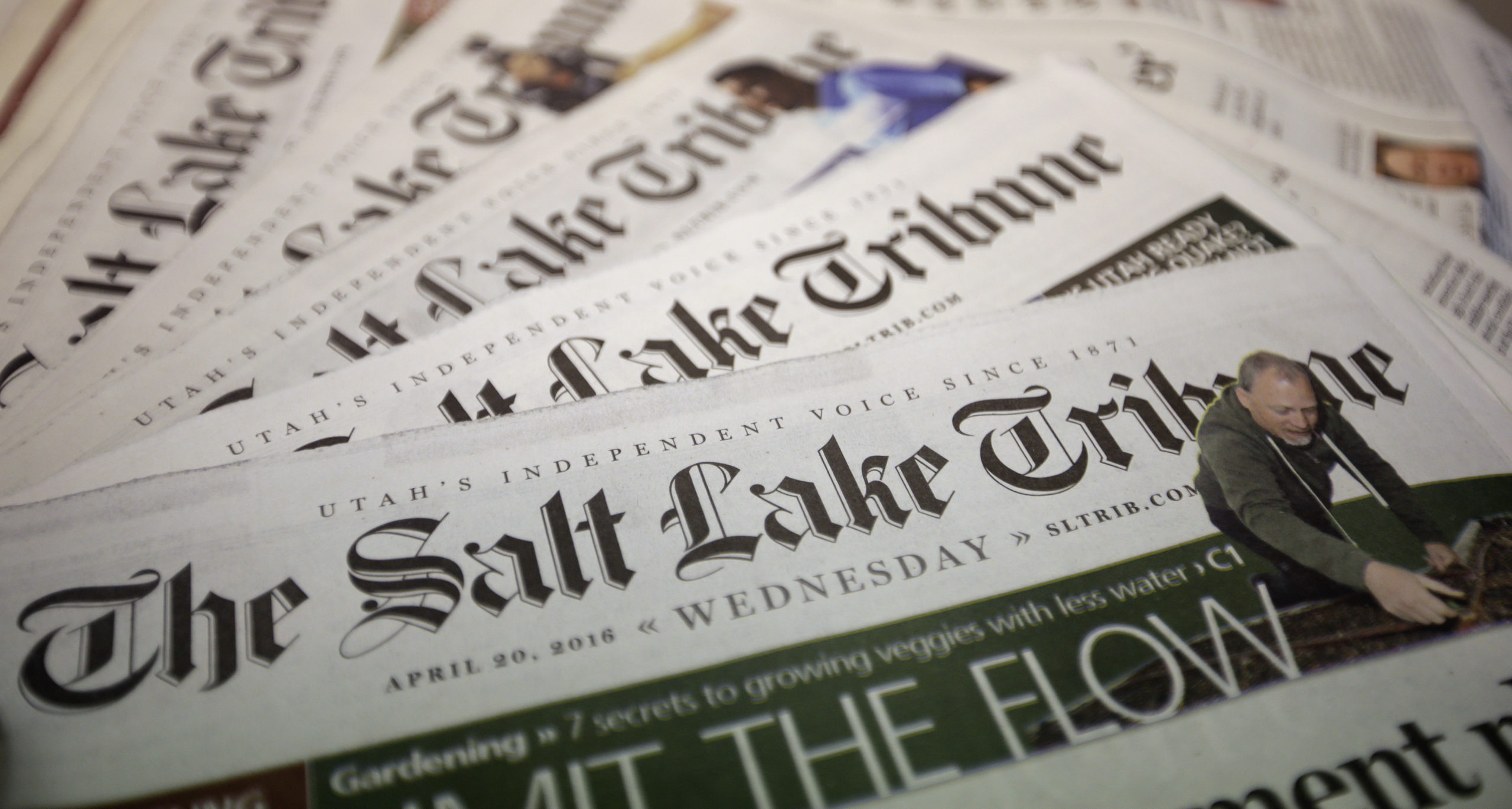A month ago, Jennifer Napier-Pearce resigned abruptly as editor of The Salt Lake Tribune. Neither she nor chairman-publisher Paul Huntsman were available then or have been since to discuss why.
It doesn’t take Sherlock Holmes or Woodward and Bernstein, however, to connect the dots. In a letter to the paper’s board, Napier-Pearce wrote, “As I’m sure you are aware, the board chair and I have differences of opinion about newsroom coverage, management and policies.”
Word on the street, and a Twitter thread by columnist Robert Gehrke, concluded that those differences came to a head this spring in how the Tribune covered the Utah governor campaign of Jon Huntsman Jr., Paul Huntsman’s brother.
Jon Huntsman, a popular former Utah governor and presidential candidate in 2016, narrowly lost a Republican primary race to Lt. Governor Spencer Cox in early July.
The contest was quite the story in Utah and attracted national coverage. Huntsman was coming back to the state after years in key ambassador positions in both the Obama and Trump administrations, bracketed by his 2016 presidential run. He had left early in a second term as Utah governor for the national post.
Newer Utah residents may not have known him. Popular two-term Gov. Gary Herbert had chosen not to run again and endorsed Cox.
In the midst of the campaign, both Huntsman and his wife got COVID-19 and were quarantined, wiping out weeks of activity. Polls predicted a very tight race with Cox holding a narrow lead. That was exactly the result — Cox won the primary by roughly 1%.
I couldn’t get a handle on how Napier-Pearce and Paul Huntsman may have differed on coverage of the contest. An informed guess is that Huntsman wanted more aggressive coverage of the shortcomings of Utah’s COVID-19 response, which Cox directed.
[the_ad id=”667826″]
More generally, Paul Huntsman has acknowledged that he takes more of a hands-on than an arms-length approach in his dealings with the Tribune’s newsroom.
In an interview with The New York Times in May 2019, Huntsman spoke of communicating directly with reporters in notes and suggestions. On one investigation, he told the Times: “I did hint to our newsroom to follow the money and you’ll find the story, which they did.”
The Times story continued:
“He sometimes contacts journalists to congratulate them on stories, he said, and he once called the editorial cartoonist Pat Bagley to ask why he never made fun of Democrats.
‘I told him there are no Democrats in Utah to make fun of,’ Mr. Bagley said.”
An editor at the rival Deseret News, asking for anonymity, summed up the conflict with Huntsman, saying of Napier-Pearce, “she ended up running a lot of interference for her staff.”
I spoke to Napier-Pearce and she declined to amplify on her resignation statement but said she is not bitter. She added, “I’m proud of the excellent journalism Tribune reporters and editors produced during my tenure. I hope they’ll continue to be Utah’s independent voice. The community needs The Tribune.”

Former Salt Lake Tribune editor Terry Orme (AP Photo/Rick Bowmer)
The disruption of changing editors has some history and context. Soon after Huntsman bought the paper he let veteran editor Terry Orme go. Orme was popular among reporters but was also a career print guy in the top leadership job at a time when the pace of digital change needed to accelerate.
Napier-Pearce, by contrast, has a multimedia reporter background and had been at the Tribune for just three years. She had previously worked at the Tribune and left briefly to take a public relations job before returning as editor. Most of her reporting and editing career has been in public radio and visual journalism.
Columnist Gehrke said in his tweet thread that he and others were skeptical of Napier-Pearce at first but won over by her journalism standards. Without newsroom management experience, she learned quickly and largely gained the staff’s confidence, Gehrke said.
The newsroom numbers roughly 70, according to a staff list on its digital site.
Since Huntsman declined to be interviewed, I don’t know how much progress the Tribune has made in the crucial goal of building paid digital subscriptions. Sltrib.com was late to institute a paywall at the start of 2018. Plus, it must compete against Deseret.com and its strong local sister site KSL.com, both of them free.
(Neither company has current audited audience circulation data with the Alliance for Audited Media, typically a staple for ad sales, an AAM spokesperson told me.)
When Huntsman announced in 2019 the Tribune would try to reincorporate as a not-for-profit, he had said that operating losses, some of which he paid out of pocket, were unsustainable.
[the_ad id=”667872″]
In a brutal print advertising market the Tribune splits what’s there with its joint operating agreement partner Deseret. So if it is experiencing the typical pandemic recession loss of 50%, that works out to half of a half of what was typical print ad revenue in 2019 for metro papers.
JOAs have grown rarer and rarer in the U.S., down from a peak of 28 to four. The notion of combining business operations to maintain distinct editorial voices does make particular sense in Salt Lake City. The Deseret News is owned by The Church of Jesus Christ of Latter-day Saints and the Tribune is secular, in a community with a population of non-Mormons and Mormons roughly equal.
The Huntsman family (and Napier-Pearce) are church members. They have continued the Tribune’s aggressive stance in reporting on church-related institutions. The paper won a 2017 Pulitzer Prize for local reporting covering lax responses to sexual assault complaints at church-owned Brigham Young and other Utah universities. More tough investigations of Mormon-related institutions have followed.
Through most of the life of the JOA, the Tribune had higher circulation than the Deseret News. That distinction fades in importance, however, with the rising importance of digital. Deseret is a powerhouse in the digital arena, with several specialty sites serving a nationwide and international audience of Mormons and covering issues of faith and family life.
Plus, in a battle for survival, the church can bring enormous reserves of wealth to bear.
Terms of the JOA have been renegotiated twice in the last decade. The current version expires at the end of the year and can be extended by mutual agreement. If it is not, the Tribune will face the necessity of bringing its half of the shared business function back in house, thus raising its expense base.
On a positive note, the Tribune has blazed a pioneering path and opened the option of nonprofit status for any news organization seeking it. The effort culminated last November in a ruling simplifying and clarifying the qualifying process.
I spoke then to one of the company’s attorneys, Meghan Biss, who had previously worked in the Internal Revenue Service’s division of exempt organizations. Biss told me that for years she was an internal critic because the IRS typically handled requests by news organizations for certification as nonprofit by doing nothing — neither approving nor denying.
Now the rules and conditions have been spelled out. Among the restrictions: Nonprofit newspapers relinquish the ability to endorse candidates. That is construed by the IRS as a foray into direct political action and would make the organization taxable.
So the Tribune did not have the option of endorsing Jon Huntsman’s candidacy should Paul Huntsman have wished.
The new status gives the Tribune a potentially life-saving chance to raise tax-deductible donations from individuals and foundations.
Huntsman has indicated that such private support is pivotal to the business model he wants to develop, with a goal of a $60 million endowment in five years and $100 million eventually. That approaches the endowment of the nonprofit Lenfest Institute that owns The Philadelphia Inquirer. The Huntsman Foundation has pledged $10 million.
Another step forward has been the recent naming of a nine-member volunteer board of directors. Huntsman has transferred his ownership but remains in charge as chairman and publisher.
Scanning the list, I noticed that the directors tilt heavily to those with journalism experience as opposed to a typical board mix of seasoned executives and high-tech entrepreneurs.
In a short email exchange, Huntsman told me that he would be willing to discuss the state of the Tribune early next year when the board has been up and running longer and the JOA issue is resolved.
David Noyce, who has been on the staff since 1984 with experience anchoring coverage of the church, steps up from managing editor to interim editor. Huntsman’s choice of a permanent successor to Napier-Pearce should go a good distance toward defining the community and journalism role for the Tribune he aspires to.
The events of this year could cause Paul Huntsman to rethink how active he wants to be in engaging the news operation — newsrooms tend to equate engagement in their decision-making as meddling.
As I wrote recently, the Adelson family in Las Vegas steers clear of any presence in the news operations of its Las Vegas Review-Journal — though the paper must necessarily cover the huge business and political presence of Sheldon Adelson and his family.
The Huntsmans have similar status in Salt Lake City. Even after billionaire Jon Huntsman Sr.’s death in 2018, they remain first citizens of the business, political, civic and philanthropic communities. Questions about the appearance of conflicts of interest in the Tribune’s coverage are inevitable.
Having one’s brother run for governor presents an extreme test of impartiality. (Former New York Times editorial page editor James Bennet had the same issue when his brother, Democratic Colorado Sen. Michael Bennet, ran for president. James Bennet recused himself from any role in endorsements or shaping other opinion content on the 2020 race.)

Print copies of The Salt Lake Tribune (AP Photo/Rick Bowmer, File)
With its financial challenges, I might look for the Tribune (and Deseret as well) to follow the example of The Arkansas Democrat-Gazette and Tampa Bay Times with deep cuts to print frequency — down to one or two papers a week. All that money for paper, press room and delivery is hard to rationalize as print circulation and advertising continue to shrink with little prospect for a complete rebound.
The Salt Lake experiment has been applauded and closely watched nationally as an alternative to chain operations and accompanying hedge-fund takeovers.
Huntsman is well aware of that. In an interview with a Seattle Times opinion writer in May, he said that after two years, “I came to my own conclusion that this entire industry was busted and broken.”
He went on to tell the writer, “My day job is: I run our family (investment) office. I buy businesses … I would never buy something like this in a million years because there’s no business model.” As philanthropy without the burden of a bottom line, he concluded there was a chance.
Four years in, the Huntsmans’ ambitious effort is arguably still a problematic work in progress rather than a replicable way forward. Paul Huntsman, his new board and a new editor have many irons to pull from the fire.
[the_ad id=”667878″]
Rick Edmonds is Poynter’s media business analyst. He can be reached at redmonds@poynter.org.







